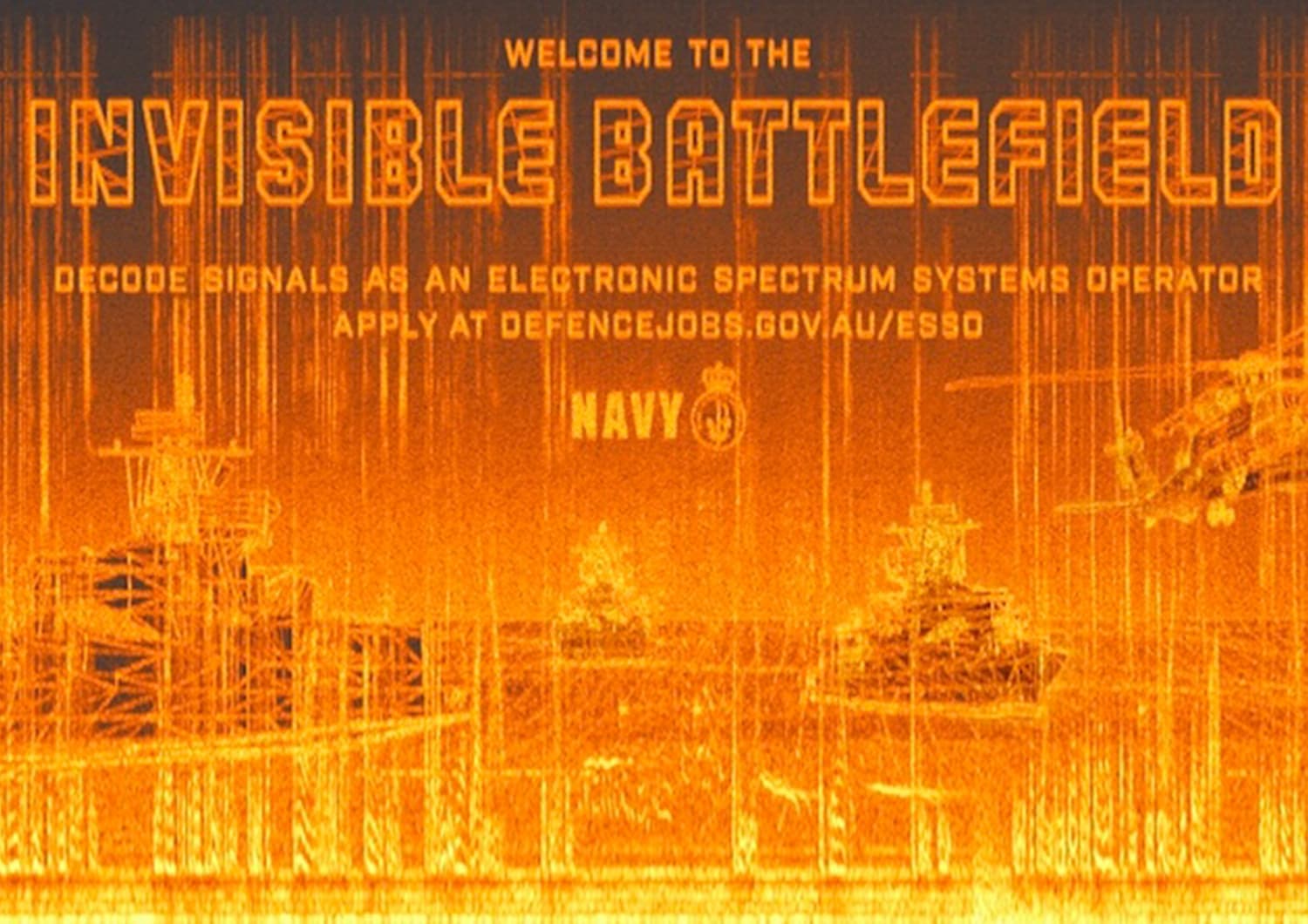The Audio Ad You Can See is 56 seconds of audio, but hidden inside the audio frequencies is a recruitment ad. To see it, the audio must be processed with a spectrogram. It’s a tool that measures frequencies and is used by tech industries to analyse sound. It’s also used by the Australian Navy to identify threats that can’t be seen. Only those with the right problem-solving abilities could find the hidden message and get the link to the job listing. The result was an innovative direct recruitment campaign that connected the Navy to its new intelligence recruits.
Audio Ad You Can See
The first ad that hid an image in sound
Client
- Royal Australian Navy
Office
- Australia & New Zealand

James Wills
Creative Director, VML
Defence Force Recruiting often needs to recruit for extremely bespoke positions into the Australian Defence Force. These unique recruiting challenges often lead to one-of-a-kind creative solutions, including the work we developed to attract ‘Electronic Spectrum Systems Operators’. These technical specialists analyse frequencies on the electromagnetic spectrum to gather intelligence and conduct surveillance at sea and ashore.
Defence Force Recruiting needed to attract multiple candidates to a niche role in the The Royal Australian Navy’s crew.
To ensure the best possible candidates were informed of the job opening and intrigued by the potential of the position, we had to find a unique way to reach a very small audience.
We learned that less than 1% of the Australian population is suitable to work in Navy intelligence. This small target audience are very technically minded and are inherent problem solvers. So, instead of simply serving up another ad on social media, we were going to hide the ad in the electromagnetic spectrum and then use social media to challenge them to find it.
VML and Defence Force Recruiting collaborated with Squeak E Clean Studios to create ‘The Audio Ad You Can See’. It’s a secret image hidden in the frequency content of an audio ad, designed to connect our target tech audience to discover the unique Navy intelligence roles.
To reveal the secret image, the audio must be processed in a spectrogram. It’s software that analyses frequencies in the electromagnetic spectrum and is used by tech, science and engineering industries. It’s also used by the Australian Navy to intercept, analyse and identify threats at sea.
Creating the hidden image was a unique collaboration between audio production and design. While the audio needed to be crafted for an image, the image needed to be crafted for audio. So, how did we make it work?
First, a designer created a poster. It was then converted into audio signals using an image synthesizer, before the voice and further soundscape elements were added. For the first time, an audio engineer also became the art director. Instead of crafting an image with Photoshop, they used Pro Tools. Every element was tweaked with meticulous precision to manipulate the electromagnetic spectrum.
This was one of the Navy’s most successful direct recruitment campaigns. On social media, it had more interactions than any other organic post from Australia’s Defence Force with 512% more impressions, resulting in 80 times more engagement with the job listing, all from high quality candidates. The Audio Ad You Can See gave these candidates an experience that went beyond listening to an ad or looking at a poster – it put them in the shoes on an Electronic Spectrum Systems Operator and helped them imagine a career in the Navy.
Please provide your contact information to continue.
Awards
2023 D&AD
Radio & Audio; Innovation
Graphite Pencil
2023 D&AD
Radio & Audio
Wood Pencil Direct




